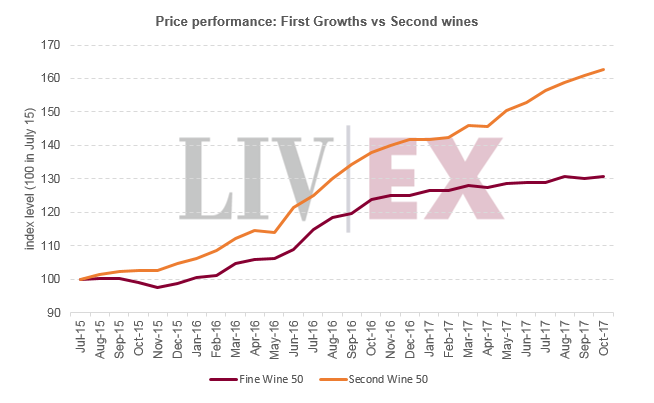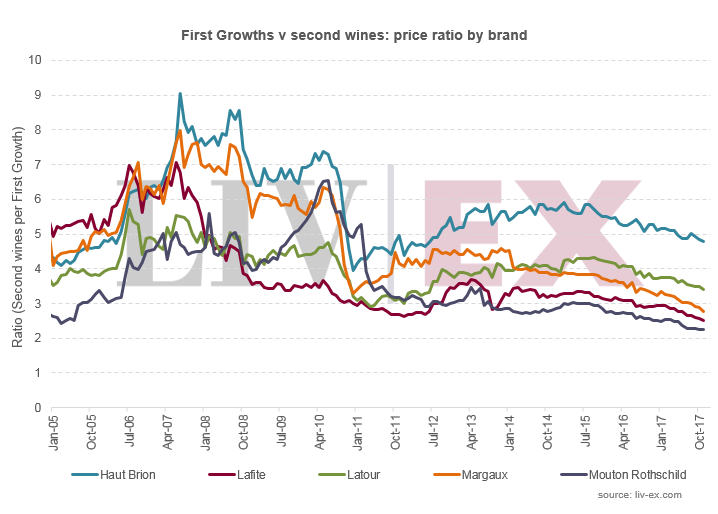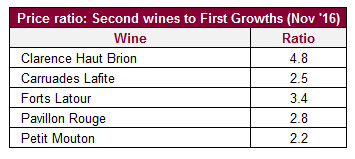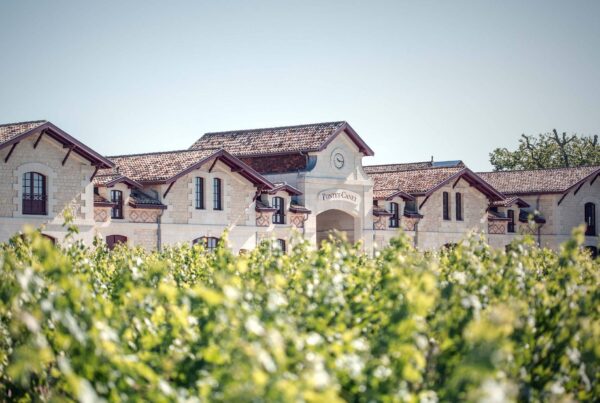
In August this year the First Growth:second wines price ratio, which is calculated by dividing the total price of the basket of the Fine Wine 50 by the basket of the Second Wine 50, passed lower than the previous record of 3.15 established in December 2011.
At its highest point back in July 2007 it was possible, on average, to buy 6.6 bottles of second wine for every bottle of Grand Vin. This number has now more than halved, currently standing at 2.96. Splitting the ratio between ‘on-vintage’ and ‘off-vintages’ the ratio stands at 3.96 and 2.42 respectively. Thus as a loose measure of value, buying second wines from on-vintages years makes more sense.

Since the wine market started rising again from roughly June 2015, second wines have become more expensive relative to their Grand Vins. This year the ratio has fallen further as price growth of the second wines has continued to accelerate, having enjoyed a large Brexit bump last year. In 2017 the Second Wine 50 has jumped 17.6%, only bettered by the Burgundy 150. On the other hand, the Fine Wine 50 is up a more modest 5.5%.

When broken down by brand, the trend is universally moving in the same direction. Petit Mouton is currently the most expensive second wine relative to its first. At present, Mouton Rothschild is just 2.2 times more expensive than Petit Mouton on average.
Does Clarence Haut Brion offer some value for collectors? Not only does the wine carry the lowest price tag, it is also the cheapest compared to its first wine. On average it is possible to buy 4.8 bottles of Clarence Haut Brion for each bottle of Haut Brion. This is the first time the ratio has fallen below five since September 2012, with the lowest point being in December 2010, when the ratio touched 3.9.

[mc4wp_form id=”18204″]





